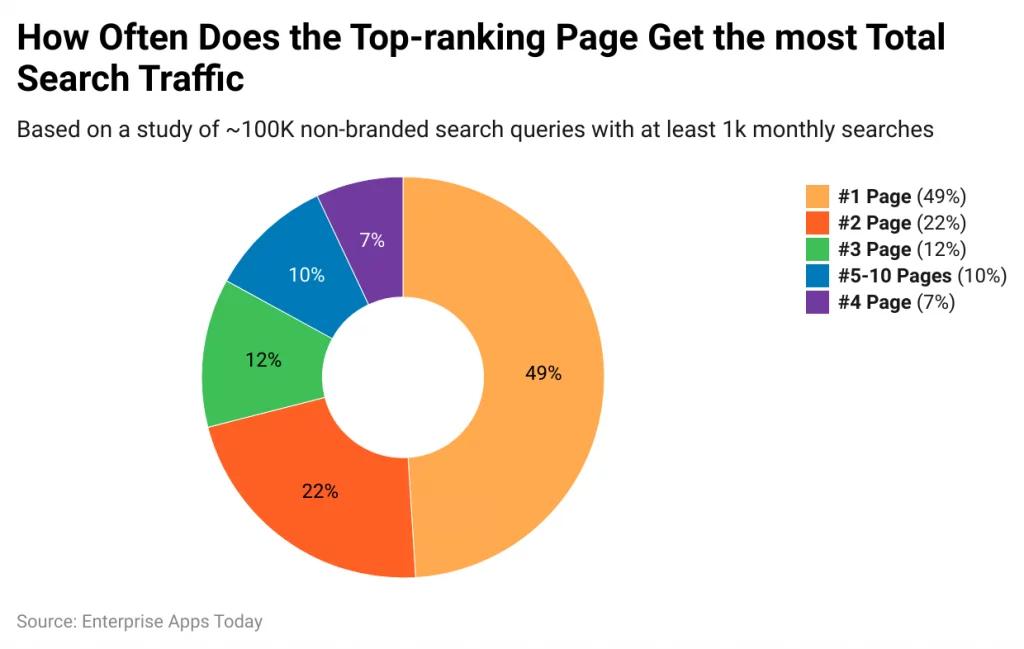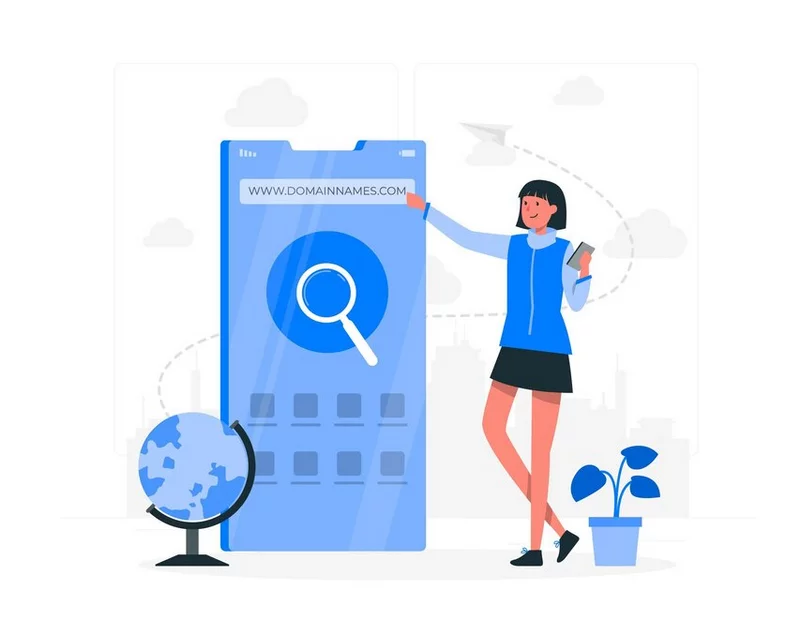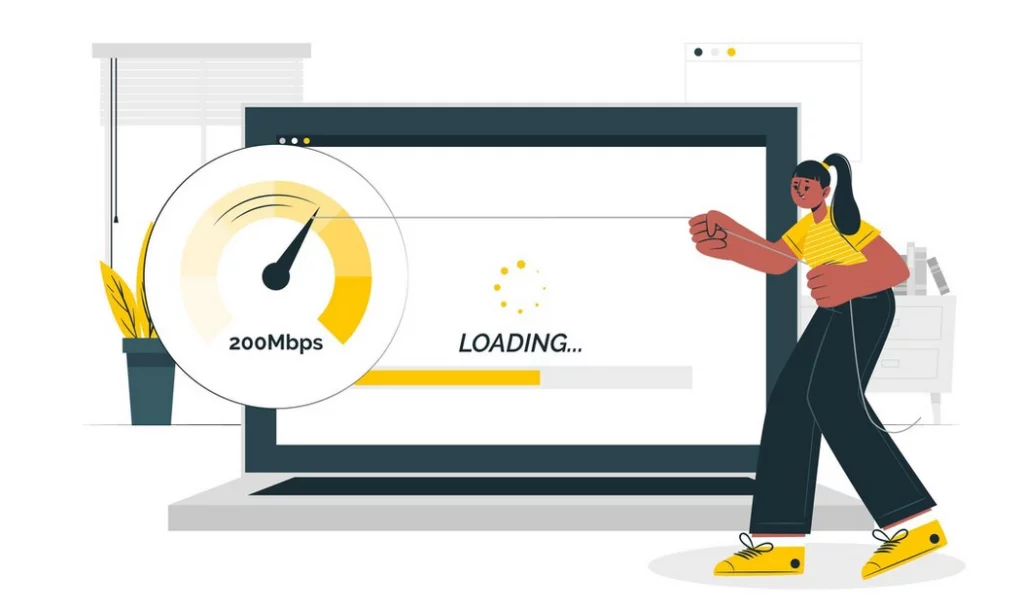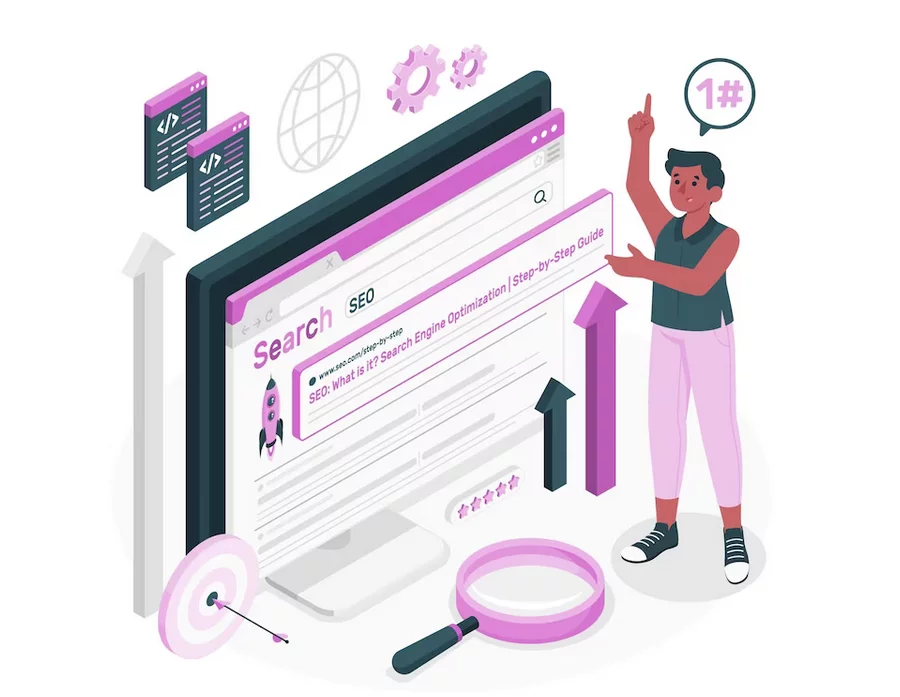In the ever-evolving digital sphere, securing a prominent position on search engine results pages isn’t just a matter of chance—it’s a strategic pursuit that demands a comprehensive approach. Enhancing search engine rankings is an art and science, a harmonious blend of content, technical optimization, and user-centric strategies.
While the nuances of search engine algorithms continually evolve, certain fundamental principles remain pivotal in achieving and sustaining higher rankings.

“You wouldn’t build a million-dollar business on quicksand, so why would you build a million-dollar website on poor SEO?”
– Liam Wade
What is Search Engine Ranking?

Search engine ranking refers to the position at which a particular web page appears in the results when someone conducts a search using a search engine like Google, Bing, or Yahoo. It’s the order in which search engine algorithms display web pages or websites based on their relevance and quality in response to a user’s query.
When a user enters a search query, search engines utilize complex algorithms to analyze and rank web pages based on various factors, including:
- Relevance: How closely the content on a web page matches the user’s search intent and keywords.
- Quality of Content: The depth, accuracy, and usefulness of the information provided on the web page.
- Authority and Trustworthiness: The credibility of the website and its content, often measured by the number and quality of backlinks from other reputable sites.
- User Experience and Technical Factors: This includes site speed, mobile-friendliness, site security (HTTPS), ease of navigation, and proper use of meta tags.
Strategies to Improve Search Engine Rankings:
1. Create Quality Content

Consistently publishing top-notch, pertinent content remains a cornerstone of successful SEO strategies. Search engines prioritize websites offering fresh, informative content that resonates with their audience, boosting visibility and establishing industry credibility.
Tailoring content to your industry, products, or services serves as a catalyst for improved search engine rankings. By strategically incorporating relevant keywords and phrases, you heighten the chances of appearing in search results when potential customers seek information related to your offerings. This strategic placement bolsters online visibility and attracts organic traffic.
Quality content not only impacts search engine algorithms but also engages and educates your audience. Delivering valuable information about your products or services aids potential customers in making informed decisions. Moreover, it cultivates a sense of authority and expertise, fostering trust in your brand.
Another compelling benefit is the potential to attract valuable backlinks. When your content is informative and shareable, it becomes a magnet for other sites to reference and link back to, signaling to search engines the credibility and value of your content. These inbound links elevate your site’s authority and SEO rankings.
Monitoring your content’s performance post-publishing is vital for optimization. Tools like Google Search Console provide invaluable insights into content rankings in search results, offering data on keyword performance, impressions, and click-through rates. This data empowers you to refine your content strategy and maximize visibility for targeted keywords.
To supercharge content optimization efforts, plugins and tools like Yoast SEO for WordPress or Moz’s suite of SEO tools come in handy. They offer suggestions and analytics, guiding content structure, keyword usage, and overall SEO performance for more effective content optimization. Integrating these tools enriches your content strategy, enhancing its impact and reach.
2. Improve Site Load Speed

Enhancing your website’s loading speed isn’t just about improving user experience; it’s also a crucial element for your site’s performance in search engine rankings. The impact of load speed extends beyond user satisfaction, directly influencing bounce rates, indexation, and even conversion rates.
A website that takes longer than a few seconds to load is likely to see visitors bouncing off. In today’s fast-paced digital landscape, users seek instant access to information and resources. Slow-loading sites lead to frustration, prompting users to abandon the site for faster alternatives. High bounce rates negatively impact site metrics and signal to search engines that the site’s content or user experience might be lacking, potentially affecting rankings.
Moreover, search engines, especially Google, crawl and index fewer pages on slow-loading websites. Delays in page loading reduce the time allocated for indexing content, hindering the visibility of your site’s pages in search results. This sluggish indexation limits your site’s discoverability, impacting overall SEO performance.
Tools like Google Search Console prove invaluable in identifying specific URLs or pages delivering a slow or inconsistent user experience. This tool offers insights into performance metrics, highlighting areas requiring attention regarding site speed. Identifying problematic URLs allows businesses to focus on optimizing these areas, enhancing load speed, and ensuring a seamless browsing experience for users.
For further optimizing site speed, plugins and tools such as WP Rocket for WordPress or GTmetrix for performance analysis offer comprehensive solutions. These tools provide detailed performance metrics, optimization suggestions, and caching functionalities, empowering businesses to further refine site speed and elevate user experience. Integrating these tools into your optimization strategy helps in delivering faster-loading and more efficient websites.
3. Optimize Site Images

Optimizing images on your website isn’t just about aesthetics; it’s a crucial component of your SEO strategy. Incorporating descriptive alt text for images provides vital relevance signals to search engines, aiding in associating images with keywords users search for. Alt text serves as a textual description of images, ensuring accessibility for all users and serving as a crucial element when images fail to load.
Search engines rely on textual cues in your site’s HTML code to comprehend its content. Since search crawlers cannot interpret images directly, alt text acts as a bridge, enabling them to accurately index image content. Descriptive alt text not only enhances accessibility but also boosts the visibility of your pages in search results by helping search engines understand the context and relevance of the images.
Utilizing SEO tools like Screaming Frog or Ahrefs expedites the process of identifying images lacking alt text. These tools conduct comprehensive site audits, flagging images across your website that require alt text. Integrating Screaming Frog, a robust SEO spider tool, or Ahrefs, an all-in-one SEO platform, into your workflow allows swift identification and resolution of images without alt text, ensuring your site aligns with SEO best practices.
Additionally, image optimization involves more than alt text. Compressing image files to reduce size without compromising quality is crucial. Plugins like Smush for WordPress or TinyPNG provide efficient compression tools. These plugins maintain image quality while minimizing file size, contributing to faster load times and an improved user experience.
4. Strategic Keyword Placement

Strategically incorporating relevant keywords across your website is pivotal for securing higher rankings in search results. Placing keywords in critical areas like URLs, page titles, headings, and body content sends essential signals to search engines, aligning your content with user search queries. This optimization tactic significantly enhances the likelihood of your website prominently appearing in search engine results for targeted keywords or phrases related to your business.
Initiate the process by integrating targeted keywords into your URLs, ensuring they are concise, descriptive, and directly relevant to the page content. Crafting meaningful, keyword-rich page titles and headings not only communicates the page’s subject clearly to users but also reinforces its relevance for search engines.
For efficient keyword management and optimization, leveraging SEO plugins and tools becomes invaluable. However, maintaining a balance is crucial to avoid keyword stuffing. Overloading your content with an unnatural abundance of keywords can adversely impact SEO efforts.
5. Optimize Site Structure and Site Navigation

Optimizing your site’s structure and navigation plays a vital role in bolstering SEO efforts and enhancing user experience. A well-structured site layout and intuitive navigation are crucial in ensuring easy access to information, reducing quick exits back to search results.
User behavior, including high bounce rates and low dwell times, significantly impacts SEO. If visitors struggle to find relevant information or navigate your site efficiently, it signals dissatisfaction, leading to quick exits. These negative signals detrimentally affect your site’s search engine rankings.
Creating a streamlined site structure and intuitive navigation aids search engine crawlers in discovering, crawling, and indexing your pages effectively. A clear site architecture enables search engines to grasp the hierarchy and connections between pages, contributing to improved search result rankings.
A strategically designed navigation bar is fundamental for a user-friendly website. It facilitates easy access to vital pages and content categories, reducing user frustration and encouraging exploration. A clear navigation structure creates a seamless browsing experience, engaging visitors and promoting prolonged site interaction, positively impacting SEO metrics.
Tools like Google Analytics and heatmapping tools such as Hotjar provide valuable insights into user behavior and site navigation. Google Analytics offers comprehensive data on user interactions, bounce rates, and navigation patterns, pinpointing areas for improvement in your site’s structure. Heatmapping tools visualize user interactions, highlighting areas of interest and behavior, guiding navigation and content placement optimizations.
For deeper guidance on creating a site optimized for top SEO results, comprehensive resources on information architecture and tailored web design plans offer invaluable insights. Exploring guides like UX Design and Information Architecture by Nielsen Norman Group can provide strategic approaches to refine your site’s structure and navigation, ensuring a user-centric design aligned with SEO best practices.
6. Optimize for Mobile Friendliness

Optimizing your website for mobile has become a critical aspect, especially with Google’s shift to a mobile-first index. Ensuring your site is mobile-friendly is essential for improved search visibility. SEO tools like Google’s Mobile-Friendly Test tool can identify URLs that aren’t mobile-friendly, aiding in swift optimizations.
Google’s transition to a mobile-first index signifies a fundamental change in how pages are assessed. It prioritizes mobile user experiences for delivering the most relevant search results, impacting both mobile and desktop searches. Neglecting mobile optimization can lead to decreased search rankings even on desktops.
As mobile devices account for nearly 60% of online searches, adopting responsive design is paramount. This approach guarantees that your site adapts seamlessly across various devices, ensuring a positive user experience. Maintaining search rankings, attracting new customers, and maximizing online revenue necessitate a mobile-optimized website.
Utilizing tools like Google’s Mobile-Friendly Test assists in identifying and rectifying mobile-friendliness issues swiftly. Additionally, plugins such as WPtouch for WordPress or AMP for WP for implementing Accelerated Mobile Pages can aid in optimizing your site for mobile, ensuring it meets the stringent mobile-first index criteria.
7. Ensure Regular Content Updation

Maintaining a consistent and updated online presence is crucial for sustained success in search engine rankings. Just like your car or home requires regular upkeep, your website demands continuous attention to uphold its prominence and generate leads for your business.
SEO implementation isn’t a static strategy; it’s a commitment to continuous optimization. Adapting to evolving internet trends and technology is essential for staying relevant and retaining top ranking positions. This involves monitoring and adapting your site’s content, structure, and SEO strategies to align with the changing algorithms and user preferences of search engines.
To streamline website optimization, leveraging SEO plugins and tools proves immensely beneficial. Plugins like All in One SEO Pack for WordPress or Moz Pro offer comprehensive SEO functionalities, providing insights, keyword tracking, and optimization suggestions. These tools empower website owners to continually refine their SEO strategies and maintain competitiveness in search results.
8. Refurbish Old Content

Regularly updating older content is pivotal for maintaining relevance and ensuring your website remains up-to-date with current trends and information. Refreshing older pieces of content prevents them from becoming outdated and helps sustain their value and visibility in search results.
There are several effective methods to update your content:
- Review and Match Search Intent: Analyze the Search Engine Results Pages (SERPs) to ensure that the intent behind your content still aligns with user queries and search trends. Adjust the content to meet the current user intent, incorporating relevant keywords and addressing users’ needs effectively.
- Update Statistics and Data: Ensure that any outdated statistics, facts, or data within the content are refreshed to maintain accuracy and credibility. Providing current information enhances the value of your content and demonstrates its reliability to users and search engines.
- Adjust Publication Date: Consider updating the publication date of the content to reflect the most recent changes. This signals to users and search engines that the content has been recently revised, indicating freshness and relevance.
- Check for Broken Links: Perform regular checks for broken or outdated links within the content. Broken links can diminish user experience and impact SEO. Utilize tools like Broken Link Checker or Link Whisper for WordPress to identify and fix broken links efficiently.
Refreshing older content breathes new life into it, improving its relevance and signaling to search engines like Google that your website is regularly updated with fresh and valuable content. This practice not only sustains the quality of your content but also showcases your commitment to providing users with accurate and current information.
9. Meta Description Optimization

Optimizing your title tags, meta descriptions, and meta tags is fundamental for improving your site’s SEO rankings. Despite residing in the backend of your website, these elements play a critical role in communicating your page’s content and relevance to search engines, crucial for proper ranking and indexing. These meta elements assist search engines in comprehending the content and purpose of your pages, guiding them to present your site for relevant searches. For instance, integrating specific keywords related to your content within the meta description, meta tags, and title tag enhances their visibility and relevance to search queries.
Ensuring that all pages on your site possess accurate and updated meta information is vital for bolstering your site’s rankings. Consistency and relevance across title tags, meta descriptions, and meta tags strengthen the association between your content and targeted keywords, optimizing the chances of your pages appearing in relevant search results.
Google Search Console offers insights into how your site appears in search results, aiding in monitoring and refining meta information for enhanced performance. Additionally, resources like Moz’s Title Tag Guide and Ahrefs’ Meta Description Guide offer detailed insights into optimizing title tags and meta descriptions for improved SEO.
10. Obtain Backlinks and Develop DA

Acquiring backlinks, in terms of both quantity and quality, significantly influences your website’s position in search engine rankings. Building a robust network of relevant and high-authority backlinks is integral to enhancing your site’s visibility and credibility in search results.
Earning links from reputable and authoritative websites serves as a strong endorsement of your content’s reliability and relevance. These backlinks act as a vote of confidence for your site’s credibility, signaling to search engines like Google that your content is valuable and trustworthy. This, in turn, positively impacts your site’s rankings in search results.
To boost your rankings, focus on earning backlinks from a diverse array of reputable sources within your industry or niche. These backlinks should stem from high-quality sites known for their credibility and relevance. The diversity and quality of your backlink profile play a pivotal role in showcasing your site’s authority and expertise on specific topics.
Building a diverse and authoritative backlink portfolio demands ongoing effort and strategic planning. By leveraging these tools and employing effective link-building strategies, you can bolster your site’s credibility, improve its search engine rankings, and expand its online visibility. Additionally, resources like Backlinko’s Definitive Guide to Link Building and Neil Patel’s Advanced Guide to Link Building offer detailed insights and strategies for successful link building.
11. Capitalize on Internal Linking

Internal links serve multiple purposes beyond navigation. They provide context to search engines about your page content and how they connect. For instance, if you have a page on wrenches and link it from a DIY project blog mentioning these tools, it guides readers and tells search engines about the relevance between the pages.
An important aspect is using anchor text. Anchor texts act as signposts, showing where the link leads. Clear and informative anchor text aligning with the linked page’s content without overshadowing primary keywords is crucial.
Tools can significantly aid in managing and optimizing internal linking. Plugins like Internal Link Juicer for WordPress or Link Whisper streamline internal linking. Internal Link Juicer automates link suggestions, enhancing site structure and SEO. Link Whisper analyzes content, simplifying the creation of an interconnected website.
Similarly, alt text is crucial for SEO and user experience. It describes images, aiding search engines in understanding content and offering descriptive text when images don’t load.
Ensuring all images have descriptive alt text is vital for SEO and accessibility. Plugins like Smush for WordPress or Alt Text Optimization tools manage alt text efficiently. Smush optimizes images and manages alt text, while Alt Text Optimization tools ensure comprehensive alt text across images.
Robust internal linking and optimized alt text not only enhance user experience but also provide valuable information to search engines, boosting SEO and site visibility. Additionally, resources like Moz’s Guide to Internal Linking and Google’s Alt Text Best Practices offer detailed insights into these practices.
12. Use Alt Text
Alt text, also known as alternative text, is displayed in HTML when the original item, such as an image, cannot be rendered. Google utilizes alt text to understand the image’s content and the context of the page.
Beyond aiding search engines, alt text is crucial for enhancing user experience. If an image fails to load, alt text ensures users still comprehend the intended content. For instance, if an image doesn’t appear, descriptive text will display on the screen, conveying the image’s essence.
It’s imperative to ensure that all your website images have alt text. This practice not only assists users experiencing difficulties in loading images but also helps Google comprehend your content.
Resources like Google’s Image Best Practices offer detailed insights into creating effective alt text to improve accessibility and SEO.
13. Target Low-Competition Keywords
Certain keywords are more frequently searched than others. Targeting terms with low competition and high search volume is ideal for reaching a wider audience.
Tools like Keywords Everywhere allow you to assess competition and costs associated with relevant terms, aiding in identifying low-competition keywords.
Identify related terms that communicate your site’s content to Google effectively. Targeting these low-competition keywords enhances your chances of ranking higher in search results and expanding your reach to more users. Additionally, resources like Moz’s Keyword Research Guide offer in-depth guidance on effective keyword targeting strategies.
14. Develop Your Local SEO Strategy

If your business caters to a specific community or has multiple locations offering distinct services, optimizing for local search is crucial.
Google prioritizes delivering the most relevant results to users. For local searches, users seek businesses within their vicinity. Optimizing your Google Business Profile is key to informing customers about your business, encompassing location, hours, services, products, and contact details.
Resources like Google’s Local Business Profile Setup Guide offer detailed steps to optimize your profile for local searches.
15. Optimize Content for Featured Snippets

Featured snippets often appear atop search engine results, particularly for question-based queries. Optimizing content for featured snippets accelerates users’ access to information and enhances the likelihood of clicks on your page. This practice signals to Google that your site offers comprehensive and pertinent information, consequently improving overall rankings.
For optimizing content:
- Structure content by posing questions (H2) followed by immediate answers.
- Utilize lists for procedural information, simplifying Google’s extraction of data.
- Maintain concise and direct answers to queries.
Resources such as Moz’s Guide to Featured Snippets offer insights into optimizing content for featured snippets.
16. Improve UX

Search engines favor websites that provide a positive user experience (UX), encompassing usability, functionality, design, and more.
To enhance UX:
- Ensure your site has intuitive design and functionality.
- Optimize for increased dwell time by offering informative content.
Resources like Google’s UX Best Practices provide guidance on enhancing user experience and accessibility. Applying these principles improves your site’s ranking by signaling relevance and usability to search engines.
17. Fill Content Gaps

Content gaps arise when user queries lack sufficient information. Identifying and addressing these gaps is crucial for ensuring users find relevant answers to their questions.
To identify content gaps:
- Analyze Competitor Keywords: Assess competitor content and keywords to discover areas where they might have comprehensive coverage and where gaps exist.
- Identify Missing Questions: Evaluate search engine results to spot questions or topics inadequately addressed by existing content. Tools like SEMrush or Ahrefs offer insights into competitor keywords and content gaps.
- Assess Content Deficiencies: Review your own content for potential gaps that might exist on your website. This includes examining existing pages to ensure they provide comprehensive coverage of relevant topics.
18. Monitor SEO Performance through Google Analytics

Google Analytics 4 (GA4) is a valuable tool for tracking and analyzing the performance of your SEO efforts. It offers comprehensive reporting on various metrics crucial for understanding your website’s traffic, user behavior, and conversions.
Through GA4, you can track metrics like:
- Traffic sources
- Session duration
- Conversion rates
You can tailor your reports to focus on specific metrics relevant to your SEO strategy and business goals. Utilizing this data allows you to make informed adjustments to your SEO campaigns, emphasizing channels that drive the most traffic and conversions.
For guidance on setting up GA4 and interpreting its metrics, the Google Analytics Academy offers free courses and resources to enhance your understanding of SEO performance tracking.
Conclusion:
The journey to higher rankings is multifaceted, blending elements of technical finesse, content relevance, user experience, and adaptability. It’s a continuous evolution, where understanding algorithms, leveraging keywords strategically, and providing exceptional user experiences converge to define your digital footprint.
The pursuit of a higher ranking isn’t just about meeting search engine criteria; it’s about establishing your authority, building trust, and delivering value to those seeking information, products, or services within your domain. Embrace the ever-evolving landscape of search engine optimization, adapt, innovate, and resonate with your audience—because in this digital era, visibility isn’t a privilege; it’s earned through relevance and credibility.
FAQs on Search Engine Rankings in 2024:
Are paid advertisements a guarantee for better ranking?
Paid advertisements (PPC) can place your website at the top of search results but are separate from organic rankings. Organic rankings are earned through SEO strategies.
How long does it take to see improvements in rankings?
Improving search engine rankings is a gradual process and can take weeks to months, depending on various factors such as competition, website history, and SEO efforts.
Does social media activity impact search engine rankings?
Social media activity indirectly influences rankings by driving traffic, building brand visibility, and potentially generating backlinks, which can positively impact SEO.
Can I guarantee a #1 ranking on search engines?
No agency or individual can guarantee a #1 ranking due to the complexity of search engine algorithms and competition. Ethical SEO efforts aim to improve rankings over time.
How often should I update my website for better rankings?
Regularly updating content, optimizing for new keywords, and ensuring technical aspects remain up-to-date can positively impact rankings. However, quality over quantity is crucial.



